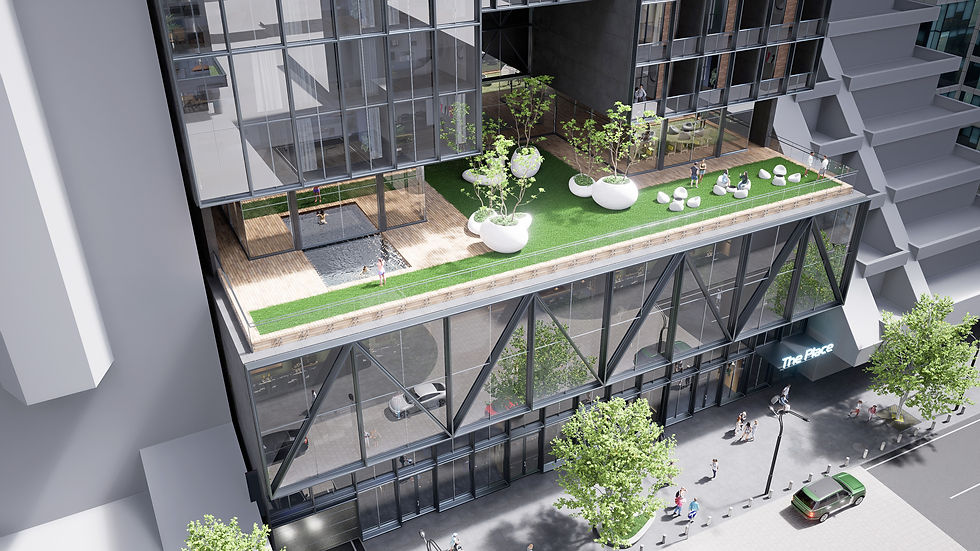The 3 Concept Pitfalls That Stall Great Projects — and How to Avoid Them
- Chris Froneman

- Apr 7
- 3 min read
Introduction
Everyone talks about design vision. But in the first 4–6 weeks of a project, that vision is often still foggy — and that’s where momentum is lost.
The concept phase isn’t just about creativity. It’s where risk is reduced, trust is built, and strategy takes shape. I’ve worked with developers, architects, and project leads across scales and sectors, and no matter the project, the same early-stage traps appear again and again.
Here are three of the most common concept pitfalls I’ve seen — and how to avoid them before they cost you time, trust, and budget.
Pitfall 1: The Blank Canvas Paralysis
Symptom: Too many options. Not enough decisions.
Impact: Weeks pass with endless sketches and no clear direction.
What causes it:
No clear design driver or spatial strategy
A loose or undeveloped brief
Over-reliance on collaborative input without a filtering framework
Solution: Start with framework thinking — what's the story this site wants to tell? What does the context require, and what does the project need to become?
Introduce a clear design driver early (scale, rhythm, context, flow) that becomes your anchor. Shape the narrative before sketching. Constrain before you explore.
Case Snapshot: I was part of a project where the brief was so open, the team ended up producing dozens of ideas with no clear direction. Once we introduced a basic massing logic, everything started falling into place. that had generated zero alignment. In one workshop, we reduced five competing schemes down to one big idea rooted in context and lifestyle. That core idea carried all the way to investor approval.
Pitfall 2: Starting with the Plan Instead of the Picture
Symptom: The layout makes sense — but no one’s excited about it.
Impact: Stakeholders feel underwhelmed, and approvals become harder to win.
What causes it:
Jumping straight into planning/programming
Bypassing emotional resonance or atmosphere
Tacking on narrative later as an afterthought
Solution: Design is emotional before it’s rational. People buy into what they can feel. Start your process with mood, massing, and atmosphere, then evolve toward plan logic.
Case Snapshot: On one project, we went straight into planning too soon. The layouts were technically fine, but no one felt excited. Reframing the mood and spatial tone gave the concept something to stand on.. Instead, we began by creating a form-driven mood study — and within two days, the narrative became the centrepiece of the entire pitch.
Pitfall 3: No Narrative = No Buy-In
Symptom: The design works technically, but no one can explain why it matters.
Impact: Clients, councils, and investors don’t engage — and momentum fades.
What causes it:
Skipping narrative development
Lack of visual storytelling or concept articulation
No one owning the story of the design
Solution: Every great project needs a voice. That voice begins with a design narrative — a clear, compelling story about place, people, and potential.
When I work with clients, we use narrative not just to explain the design, but to shape it. That clarity leads to stronger internal alignment, smoother approvals, and faster decisions.
Case Snapshot: I worked on a concept where the design looked good on paper but didn’t stick. There wasn’t a clear story behind it. Once a narrative emerged, it all made more sense — to everyone.. The revised narrative helped the client secure a zoning concession and became the anchor for all stakeholder communications.
Bonus Pitfall: Design by Committee
Symptom: Too many opinions dilute the vision.
Impact: Original intent is lost. Design becomes bland and slow.
What causes it:
Group decision-making without clear direction
Fear of strong creative leadership
No one filtering ideas through a central lens
Solution: Constraints create clarity. Establish a small team with clear creative leadership. If needed, bring in an external design strategist to define and defend the vision.
When I act as a Design Guardian or Concept Lead, I bring clarity to teams who are struggling to speak with one voice. That alone can speed up projects by weeks.
Before You Start Your Next Concept Phase, Ask:
Can we explain the story behind this project in one sentence?
Have we designed the feeling before the function?
Do we have a clear design driver that everyone understands?
Is someone protecting the vision?
Getting the concept right isn't about having the most ideas — it's about having the clearest one.
If you're about to start a project, or you're already feeling stuck in the concept fog, let's talk.




Comments